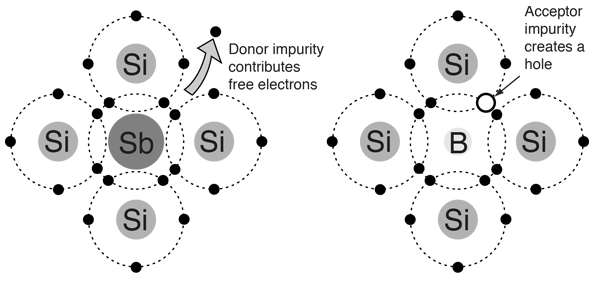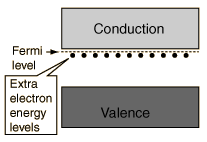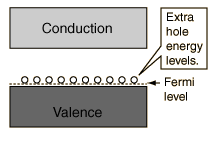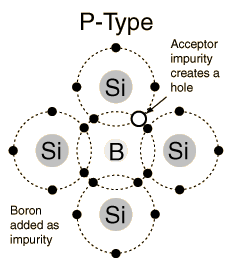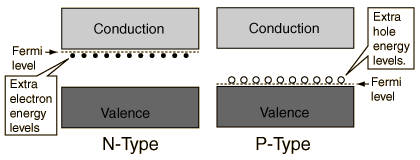The Doping of Semiconductors
The addition of a small percentage of foreign atoms in the regular crystal lattice of silicon or germanium produces dramatic changes in their electrical properties, producing n-type and p-type semiconductors.
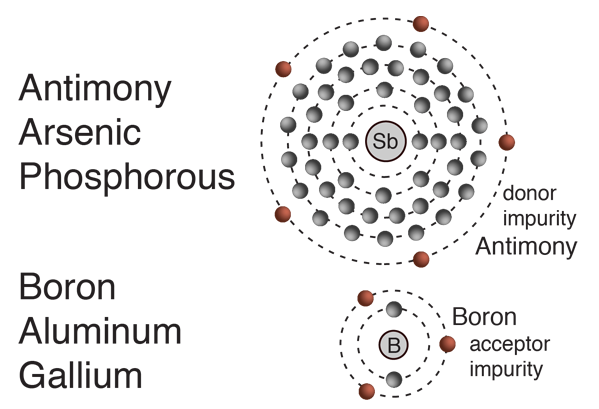
Semiconductor concepts
| HyperPhysics***** Condensed Matter | R Nave |
